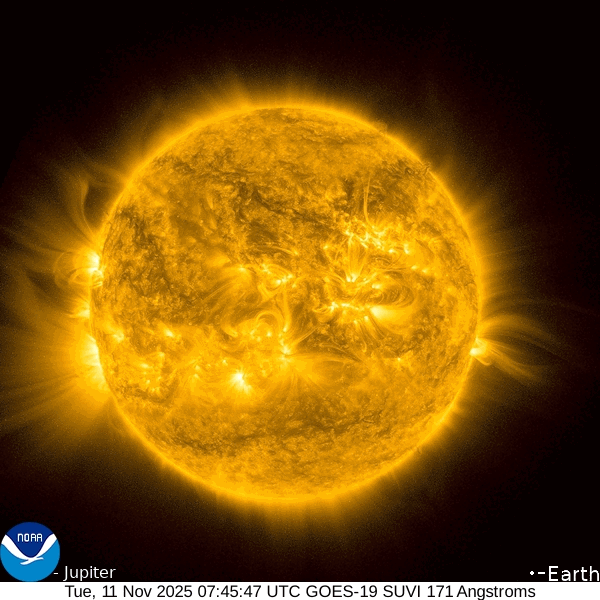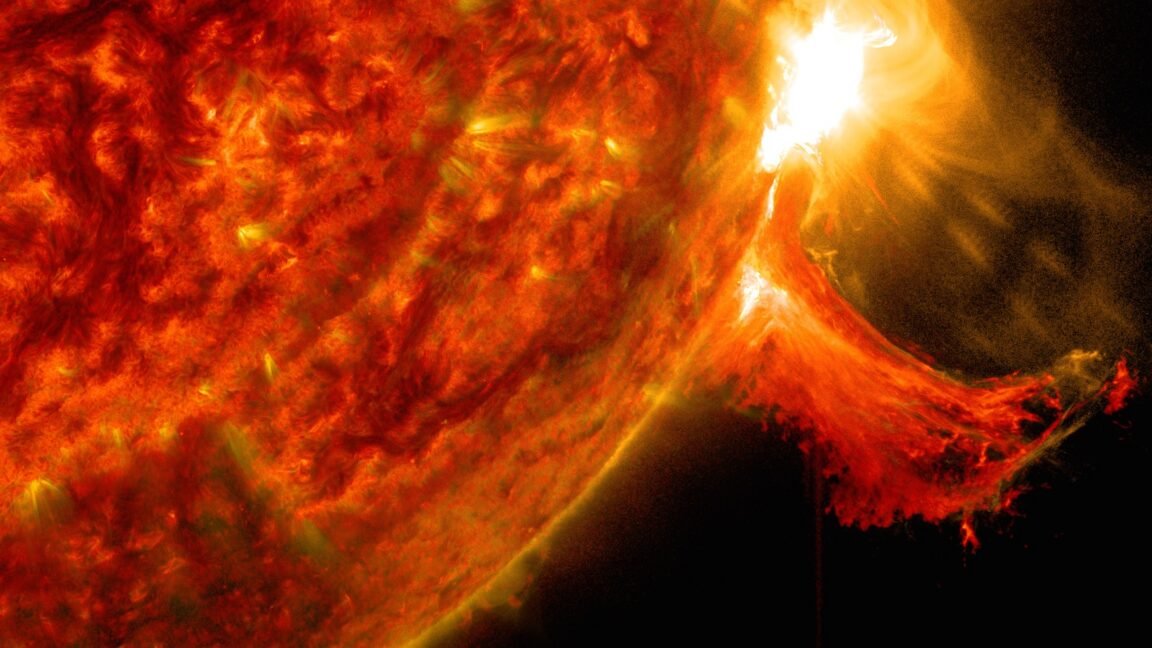A series of explosions from the sun, known as a coronal mass ejection, sparked a dazzling auroral light show Tuesday night. The explosions sent a burst of material from the Sun, including charged particles with a strong localized magnetic field, toward Earth at speeds of more than 1 million miles per hour, or 500 kilometers per second.

A solar ultraviolet imager on one of NOAA’s GOES weather satellites captured this view of a coronal mass ejection from the Sun early Tuesday.
Credit: NOAA
Satellites detected the most recent strong coronal mass ejection, accompanied by a bright solar flare early Tuesday. It was expected to reach Earth on Wednesday.
“We have already seen two of the three anticipated coronal mass ejections reach Earth,” said Shawn Dahl, a forecaster at NOAA’s Space Weather Prediction Center in Boulder, Colorado. The first two waves were “quite intense,” Dahl said, and “much stronger than we expected.”
The storm caused northern lights that were visible as far south as Texas, Florida and Mexico on Tuesday night. Another round of northern lights may be visible Wednesday night.
Dahl said Wednesday’s storm was “the most energetic” of all recent coronal mass ejections. It is also traveling at greater speed, fast enough to cover the 92 million miles between the Sun and Earth in less than two days. Forecasters are predicting a G4 level, or severe, geomagnetic storm from Wednesday through Thursday, with a slight chance of a rare extreme G5 storm, something that has happened only once in the past two decades.

The Aurora Borealis lights up the night sky over Monroe, Wisconsin, on November 11, 2025, during one of the most powerful solar storms in decades.
Credit: Ross Harried/Nurfoto via Getty Images
A sudden influx of charged particles from the Sun can disrupt Earth’s magnetic field, disrupting power grids, impairing GPS navigation signals and disrupting radio communications. According to NOAA, the G4 geomagnetic storm could trigger “potential widespread voltage control problems” in terrestrial electrical networks, as well as potential surface charging problems on satellites flying above the protective layers of the atmosphere.
It is not easy to predict the exact effects of a geomagnetic storm before it arrives on Earth’s doorstep. Many satellites facing the Sun, a million miles from Earth, carry sensors to detect the speed of the solar wind, its charge and the direction of its magnetic field. This information helps forecasters know what to expect.
“These types of storms can be very variable,” Dahl said.
